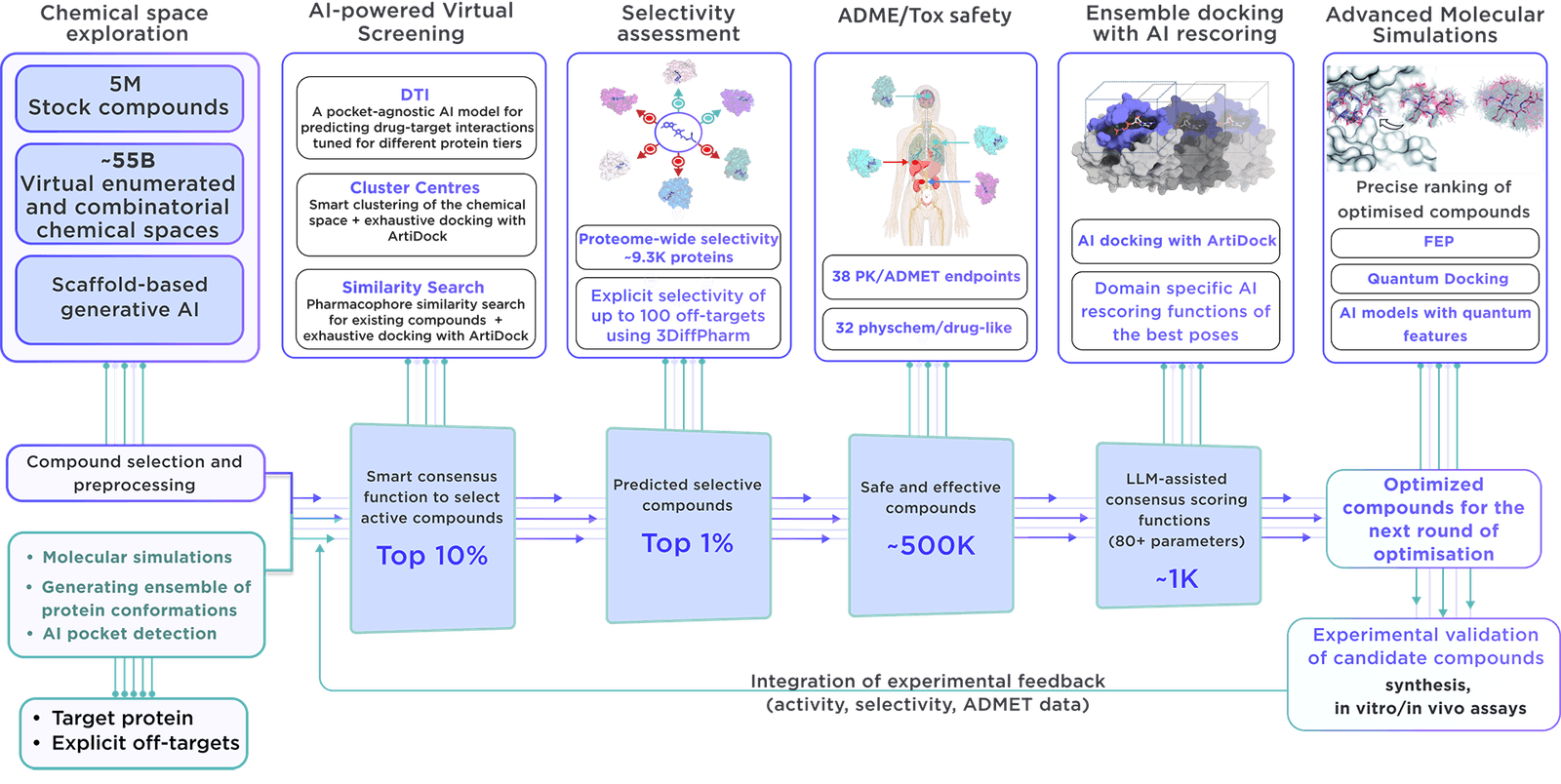Focused On-demand Libraries - Receptor.AI Collaboration
Explore the Potential with AI-Driven Innovation
This comprehensive focused library is produced on demand with state-of-the-art virtual screening and parameter assessment technology driven by Receptor.AI drug discovery platform. This approach outperforms traditional methods and provides higher-quality compounds with superior activity, selectivity and safety.
From a virtual chemical space containing more than 60 billion molecules, we precisely choose certain compounds. Reaxense aids in their synthesis and provision.
The library includes a list of the most promising modulators annotated with 38 ADME-Tox and 32 physicochemical and drug-likeness parameters. Also, each compound is presented with its optimal docking poses, affinity scores, and activity scores, providing a comprehensive overview.
We employ our advanced, specialised process to create targeted libraries for enzymes.
The procedure entails thorough molecular simulations of the catalytic and allosteric binding pockets, accompanied by ensemble virtual screening that factors in their conformational flexibility. When developing modulators, the structural modifications brought about by reaction intermediates are factored in to optimize activity and selectivity.
Several key aspects differentiate our library:
- Receptor.AI compiles an all-encompassing dataset on the target protein, including historical experiments, literature data, known ligands, and structural insights, maximising the chances of prioritising the most pertinent compounds.
- The platform employs state-of-the-art molecular simulations to identify potential binding sites, ensuring the focused library is primed for discovering allosteric inhibitors and binders of concealed pockets.
- Over 50 customisable AI models, thoroughly evaluated in various drug discovery endeavours and research projects, make Receptor.AI both efficient and accurate. This technology is integral to the development of our focused libraries.
- In addition to generating focused libraries, Receptor.AI offers a full range of services and solutions for every step of preclinical drug discovery, with a pricing model based on success, thereby reducing risk and promoting joint project success.
Receptor.AI
Q6ZS86
UPID:
GLPK5_HUMAN
ALTERNATIVE NAMES:
ATP:glycerol 3-phosphotransferase 5
ALTERNATIVE UPACC:
Q6ZS86; B2R9I2; D3DNG2; Q8N2A7; Q8N5E6

